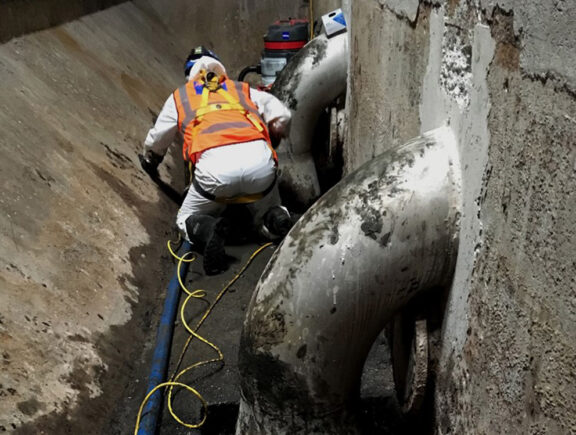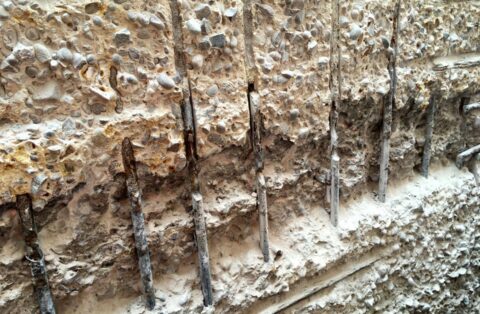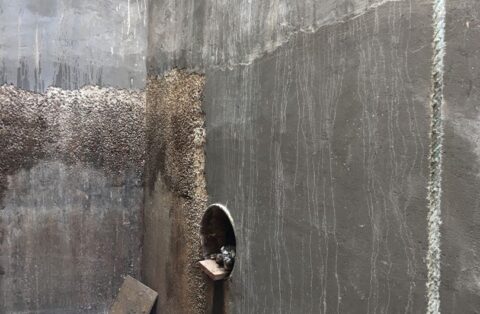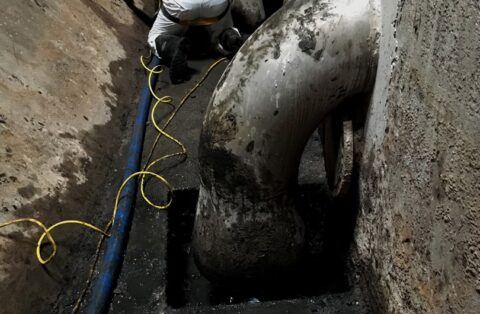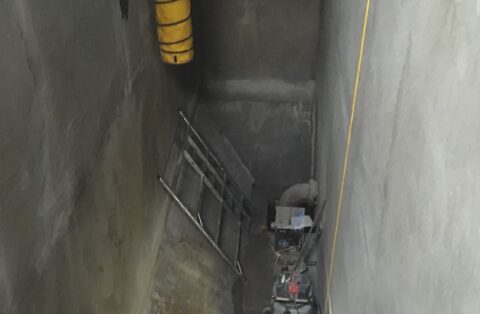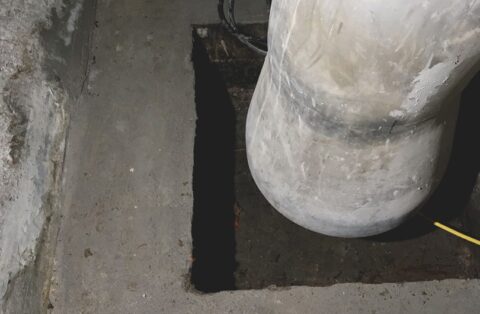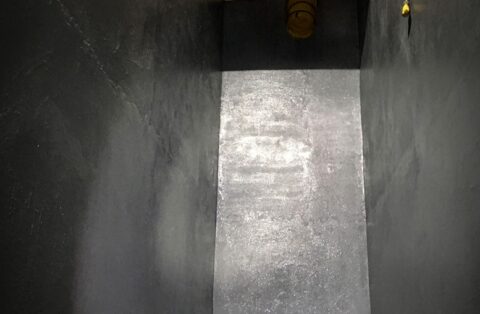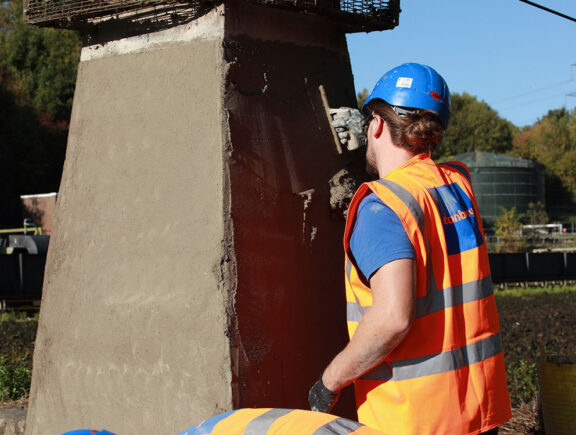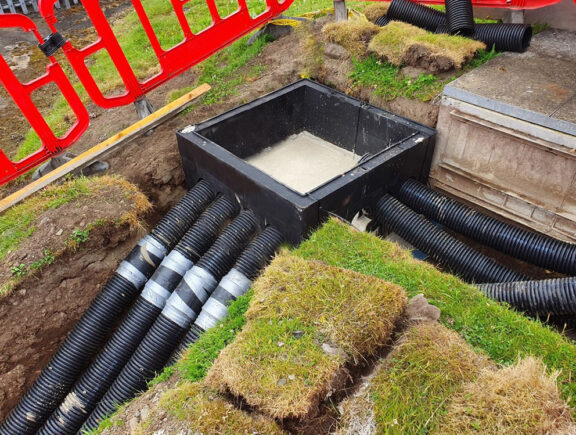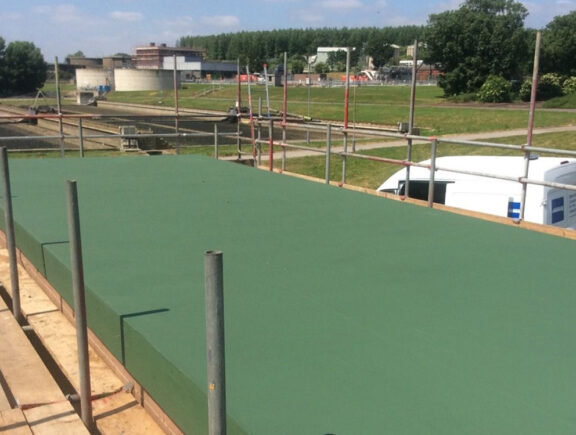The scope of works included:
- High pressure water jet to all concrete surfaces
- Removal and replacement of defected concrete and steelwork
- Application of fast setting cementitious repair mortar and epoxy coatings
High pressure water jetting was used to initially remove any remaining hydrogen sulphide deposits on the concrete surfaces. The steel reinforcement was then fully exposed, allowing all defected areas to be removed and replaced, using splicing with a 100mm overlap to repair the existing steel.
Using a fast setting cementitious repair mortar, the walls were built out to a minimum specification requirement of 50mm coverage over the steelwork, before a final skimmed layer was applied. Repair works were additionally carried out to 2no. cross support beams and the concrete walkway.
Throughout the refurbishment works, moisture content readings were recorded to ensure an ideal application environment was achieved for the use of specialist resin Nitocote EN401. The resin requires a maximum moisture content of 5% as stated by the product IFU (Information for Use) document. As the natural environment did not meet this, dehumidifiers were installed to maintain the environment, allowing the product to be successfully and compliantly applied.
Once the walls were complete, the wet well was cleaned and the free-standing water was pumped to allow works to the floor to begin. Temporary deck flooring and shuttering materials were also removed, allowing access to the substrate and the 3no. slump holes filled with sludge and debris which required cleaning.
Scabbling, a technique used to remove a thin layer from the surface of the concrete, was used to abrade the floor and create a sufficient key for application. Grinders were also used to prepare the 3no. sump holes before a final application of cementitious repair mortar was applied.
The wet well was completed with one final coat of Nitocote EN901 followed by two coats of EP410 to ensure the correct level of protection against future acid attack was achieved.
Once the cure period of seven days was complete, the wet well was handed back to the client for final inspection and return to service.
